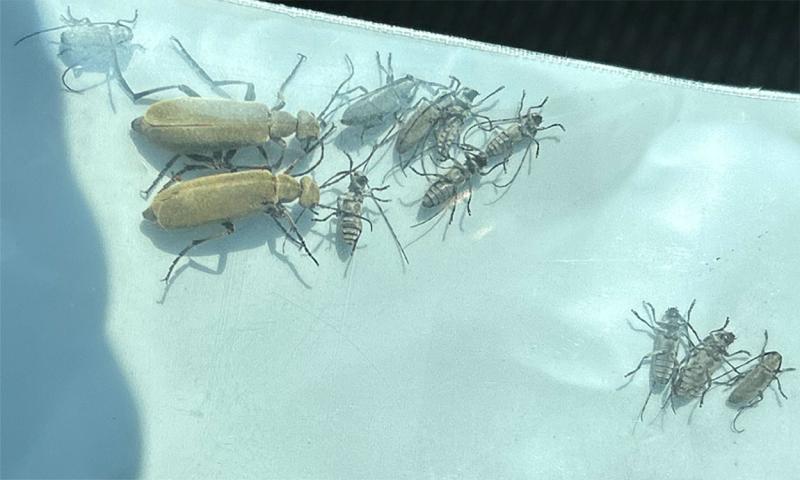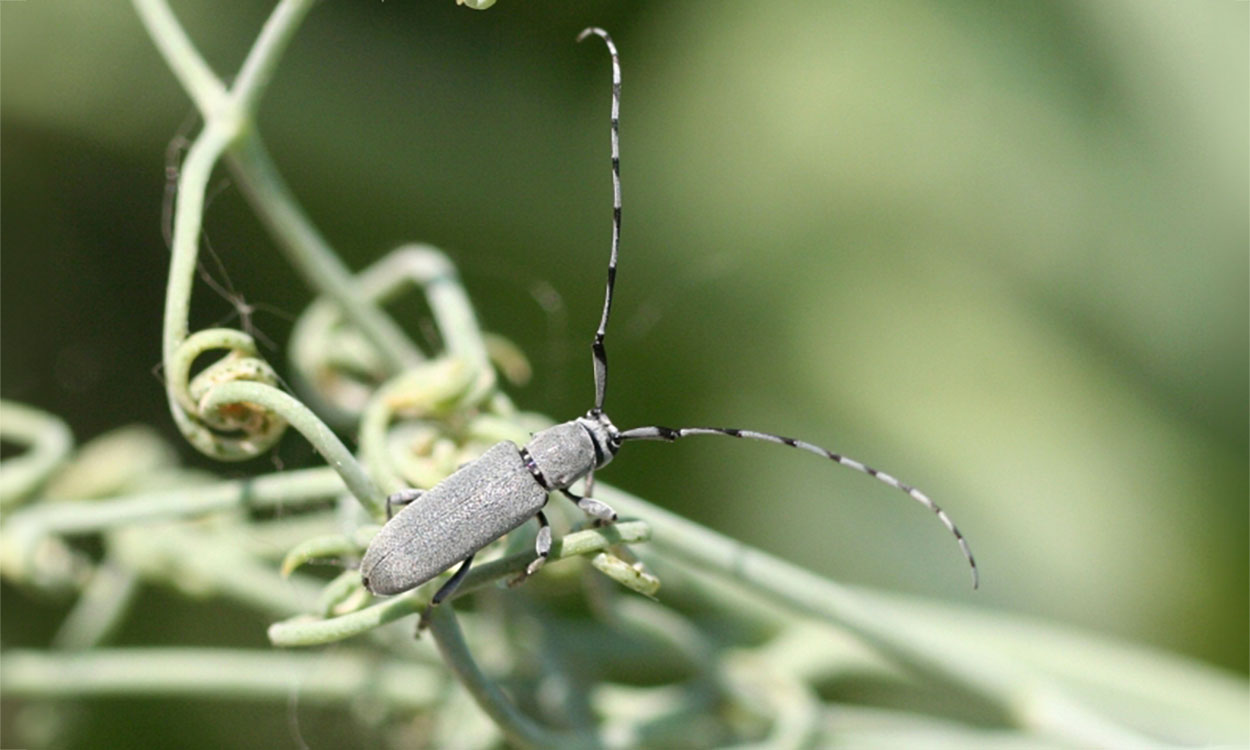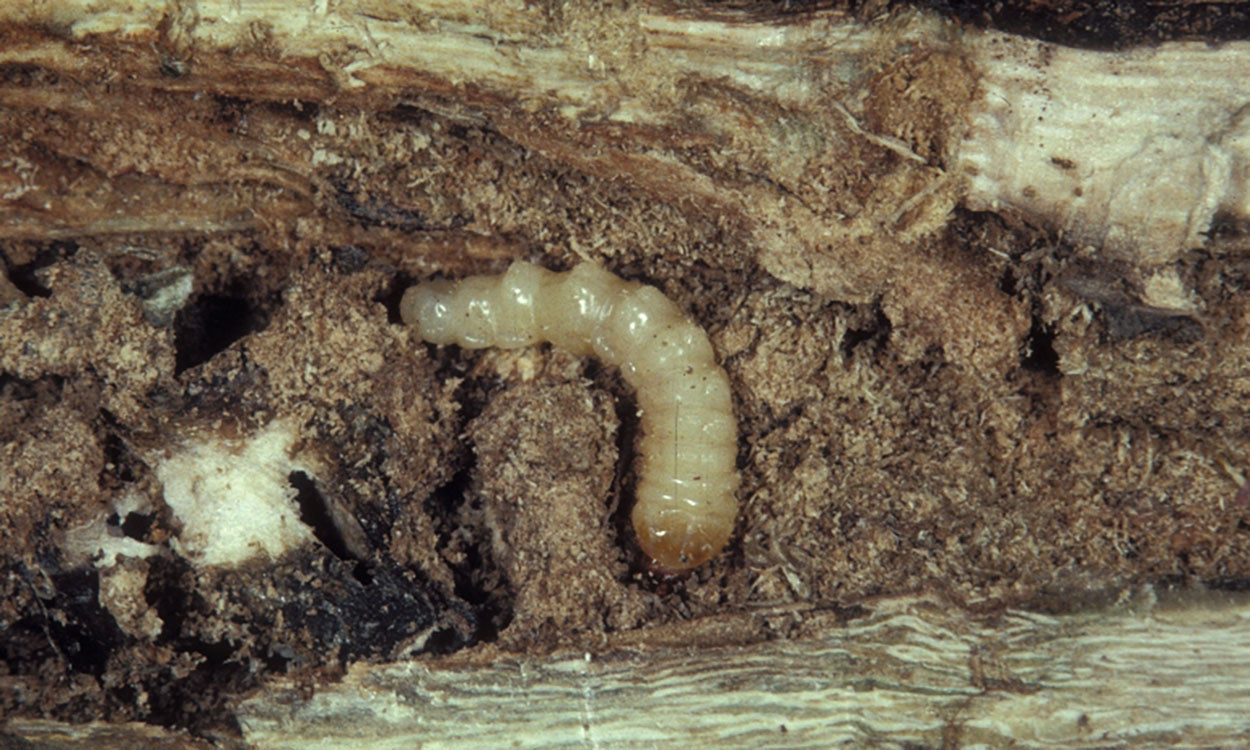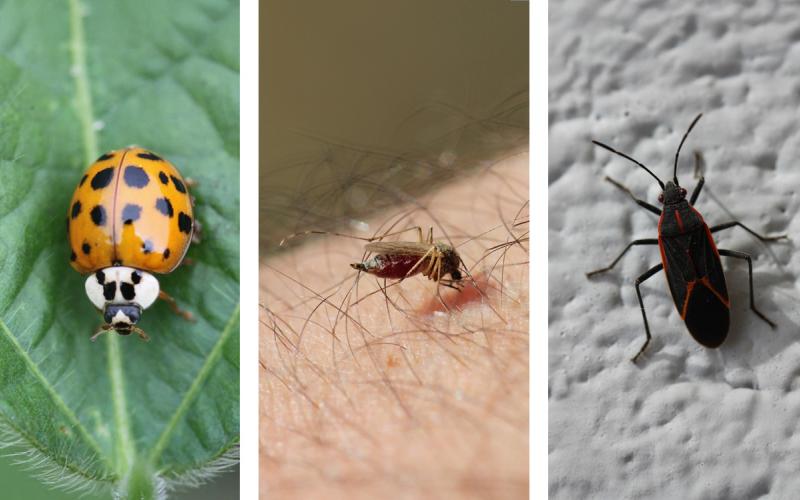
Originally Submitted: July 11, 2024
We are again surveying soybean in South Dakota for Dectes stem borer adults through a grant from the South Dakota Soybean Research and Promotion Council. Last year we started observing Dectes stem borer adults in the middle of June, but this year the beetles were a little slower on emerging. However, large populations of beetles have been observed in soybeans this week (Figure 1). Our samples have also yielded large numbers of ash gray blister beetles, which are sometimes confused with Dectes stem borer. As a rule of thumb, always look at the length of the antennae, as ash gray blister beetles have shorter antennae and will also be much larger in size than Dectes stem borers. Last year, adults were collected from Bon Homme, Clay, Douglas, Turner, and Yankton counties. So far in 2024, we have also observed adults in Lincoln County.
Identification
Adult Dectes stem borers are light gray and approximately three-eighths of an inch long. They have long antennae with segments that alternate gray and black in color (Figure 2). The larvae are cream colored and often are referred to as having an accordion shaped body (Figure 3). The larvae range from one-half to five-eighths of an inch long. The larvae observed in soybean stems will be smaller than those observed in sunflower stems.
Adult

Larva

Management
Due to the prolonged emergence of adult Dectes stem borers in June through July, it is difficult to reduce populations using foliar insecticides. During 2023, we observed reduced stem infestations with an insecticide application that occurred in early July. Although there is not a threshold for Dectes stem borer adults at this time, we suggest considering an insecticide application if an average of 30 or more adults is observed from four sets of 30 sweeps with a 15-inch diameter sweep net. For a list of insecticides that are labeled for Dectes stem borer in South Dakota please refer to the latest South Dakota Pest Management Guide: Soybean.
Dectes stem borer infestations may be worse in no-till soybean, as conventional tillage disrupts the stem by either burying it or ensuring that the larvae are exposed to freezing temperatures. For no-till fields, vertical tillage may be an option to disrupt the larvae while having minimal impact on the no-till field. It’s also important to reduce the weedy hosts (including wild sunflower, cocklebur, and giant ragweed) in or around fields. If an infested field is detected prior to lodging, early harvest in the fall may reduce yield losses.


